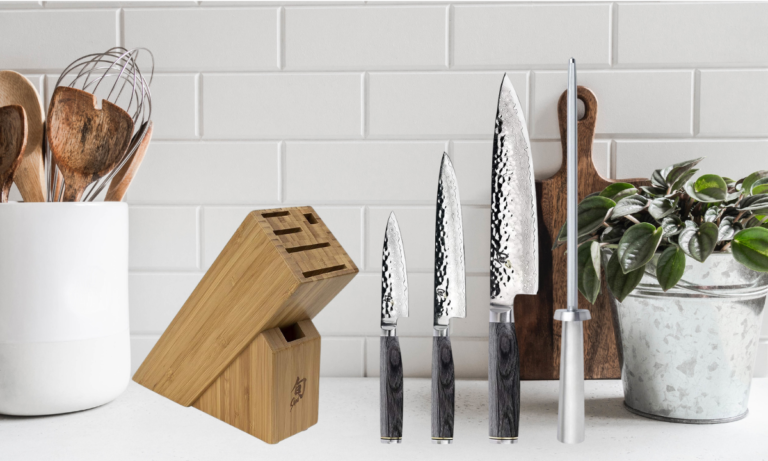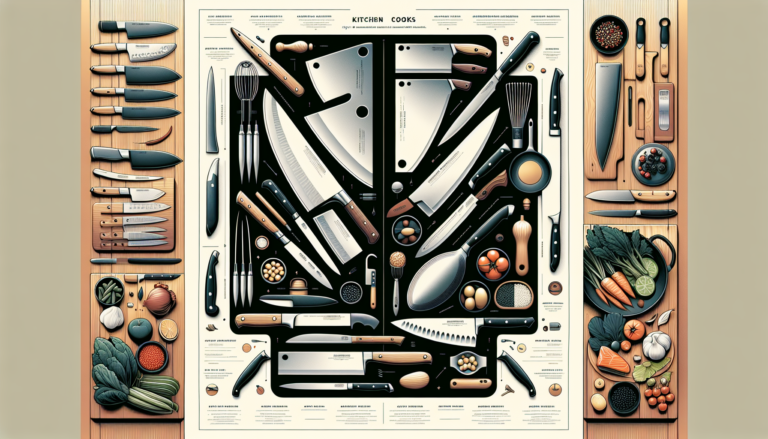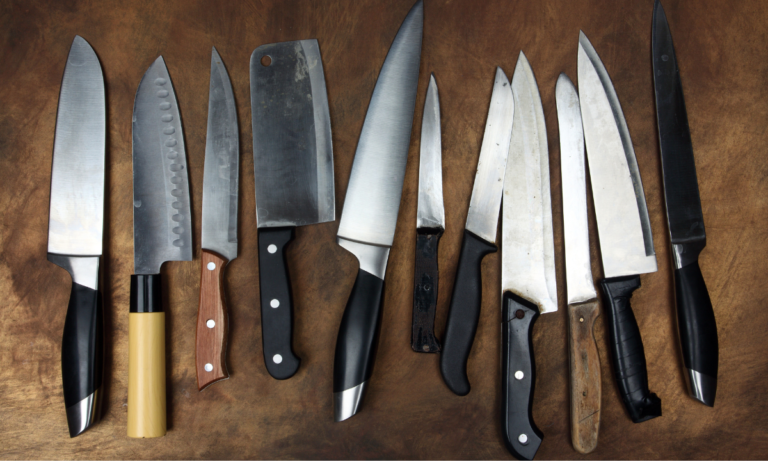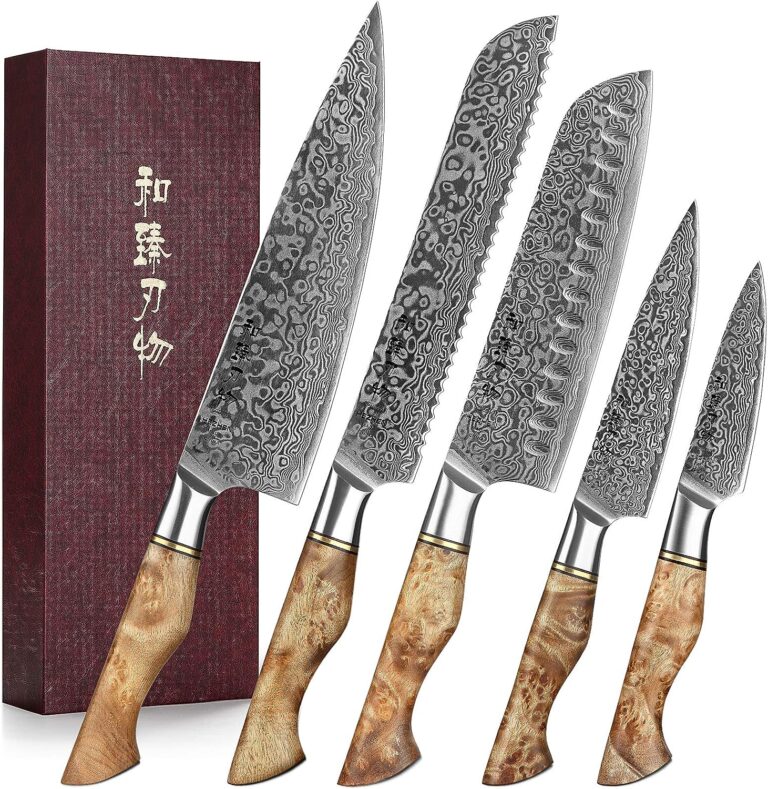German Steel vs Japanese Steel: Which is Better for Kitchen Knives?
Have you ever stood in the kitchen goods section of a store, agonizing over whether to choose a knife made from German steel or Japanese steel? With so many factors to consider, making the right choice for your cooking needs can be a real head-scratcher.
Understanding Steel in Kitchen Knives
The decision between German and Japanese steel often boils down to the specific demands of your cooking style and personal preferences. It’s essential to understand the characteristics of these materials to make an informed choice. Both German and Japanese steels have achieved a legendary status among chefs and home cooks alike, each bringing unique qualities to the table.
What is Steel?
Before we delve into the intricacies of German and Japanese steel, let’s get a basic understanding of what steel is. Steel is an alloy primarily made of iron and carbon, although other elements can be added to achieve desired mechanical properties.
In the context of kitchen knives, the steel used can vary significantly in terms of hardness, sharpness, and durability, all of which directly influence a knife’s performance.
Characteristics of German Steel
When it comes to German steel, think robust and reliable. Known for its toughness, German steel is widely regarded for producing durable kitchen knives that can withstand heavy use over time.
Composition
German steel typically comprises alloys such as high-carbon stainless steel. The presence of chromium in this alloy contributes to impressive corrosion resistance, which is crucial in kitchen environments exposed to moisture and acidity.
Hardness and Durability
One of the defining traits of German steel is its hardness, usually ranging between 56-58 on the Rockwell Hardness Scale. This level of hardness provides a good balance, allowing knives to be strong yet flexible enough to withstand the rigors of everyday use without chipping or breaking.
Maintenance
German steel knives are easy to maintain. They require less frequent sharpening and are generally dishwasher safe, although hand-washing is recommended to preserve their edges longer. This makes them an ideal choice for home cooks who favor convenience and reliability.
Common Uses
Due to their sturdier build, German steel knives are ideal for tasks that require forceful cuts, such as chopping bones, cutting tough vegetables, or slicing through thick meats. They are often heavier, providing the necessary weight to support such tasks.
Characteristics of Japanese Steel
Japanese steel boasts a reputation for precision and finesse, often revered for creating exceptionally sharp knives. Known for their craftsmanship, these knives are typically lighter and designed for more nuanced cutting tasks.
Composition
Japanese knives frequently utilize high-carbon stainless steel as well, but often with additional elements like vanadium and cobalt, enhancing sharpness and edge retention. The specific formulations can vary significantly, allowing for specialty steel variations like VG-10 and Aogami.
Hardness and Sharpness
Japanese steel knives often score higher on the Rockwell Hardness Scale, typically between 60-62. This hardness enables them to achieve unparalleled sharpness and edge retention. However, this comes at the cost of increased vulnerability to chipping if not handled carefully.
Maintenance
Maintaining Japanese steel knives requires more diligence. The sharper edge needs regular sharpening to retain its cutting precision, and the thinner blades necessitate careful handling to prevent damage. Hand-washing is a must to avoid potential damage from dishwashing detergents and heat.
Common Uses
Japanese knives excel at precision tasks such as slicing fish for sashimi or finely chopping vegetables. Their razor-sharp edges and lighter weight afford chefs great control, facilitating more intricate and delicate cuts.
Comparing German and Japanese Steel
Understanding the specific traits of both German and Japanese steel allows you to see where each excels and where they may have limitations. Let’s compare them side by side to make the distinction clearer.
| Feature | German Steel | Japanese Steel |
|---|---|---|
| Composition | High-carbon stainless steel | High-carbon stainless with other elements |
| Hardness | 56-58 Rockwell | 60-62 Rockwell |
| Sharpness | Good | Excellent |
| Durability | More durable due to softer steel | Less durable, prone to chipping |
| Maintenance | Easy, less frequent sharpening needed | Requires regular sharpening |
| Common Tasks | Heavy-duty cutting | Precision cutting |
Making the Right Choice
When deciding between German steel and Japanese steel for kitchen knives, consider how you plan to use the knife, your maintenance preferences, and your skill level with knife handling.
Cooking Style
If you regularly prepare meals that involve cutting through joints, breaking down larger cuts of meat, or need a reliable all-purpose knife, German steel might be your best bet. Its robustness is well-suited for heavy-duty work and general kitchen tasks.
On the other hand, if your cooking consists of preparing finer, more intricate dishes, possibly involving a lot of meat trimming, slicing, and vegetable carving, Japanese steel could enhance your culinary experience thanks to its superior sharpness and precision.
Maintenance Preferences
For those who prefer a low-maintenance option, the durability and forgiving nature of German steel could be advantageous. However, if you’re willing to invest the time and effort in upkeep and appreciate the value of precision cutting, the sharpness of Japanese steel is unmatched.
Skill Level
Finally, consider your comfort and skill level with handling knives. German knives, with their heavier, more robust build, are often easier for beginners to manage. Conversely, Japanese knives, due to their sharpness and lightness, can be more demanding but are profoundly rewarding for experienced chefs who know how to maximize their advantages.
The Cultural and Craftsmanship Elements
Another layer to consider is the cultural heritage and craftsmanship involved in the making of these knives. Each of these knives not only embodies different physical properties but also reflects the rich traditions and meticulous craftsmanship of their respective cultures.
German Craftsmanship
Rooted in a long history of metalworking excellence, German steel knives emphasize durability and practicality. German knife-making companies like Wüsthof and Zwilling J.A. Henckels have honed their production techniques over centuries, often employing state-of-the-art technology alongside traditional methods to create knives that are not only reliable but also innovative.
Japanese Craftsmanship
Japanese knife-making is an art form that has been passed down through generations, deeply ingrained in the culture’s reverence for meticulousness. The tradition is often compared to that of samurai sword making, with an emphasis on attention to detail and dedication to achieving the best possible sharpness. Renowned makers like Shun and Global embody this heritage, delivering knives that are both functional and works of art.
Conclusion
German steel and Japanese steel kitchen knives each offer distinct advantages, shaped by their unique compositions, hardness, and craftsmanship. Whether you need a tool for heavy-duty kitchen tasks or one for fine, precise cuts, knowing the individual characteristics of these steels can guide you to the right choice. Ultimately, the best knife is the one that aligns with your cooking style, maintenance preferences, and skill level, making meal preparation not just a task, but a culinary pleasure.



